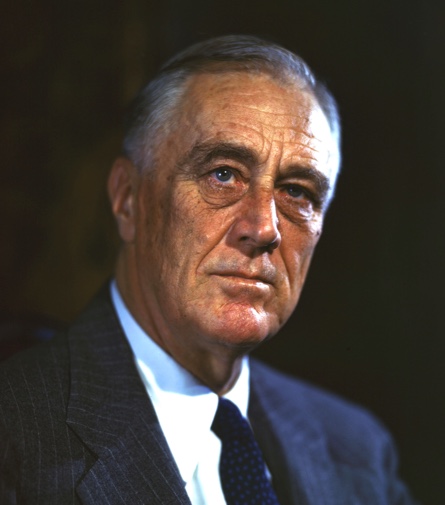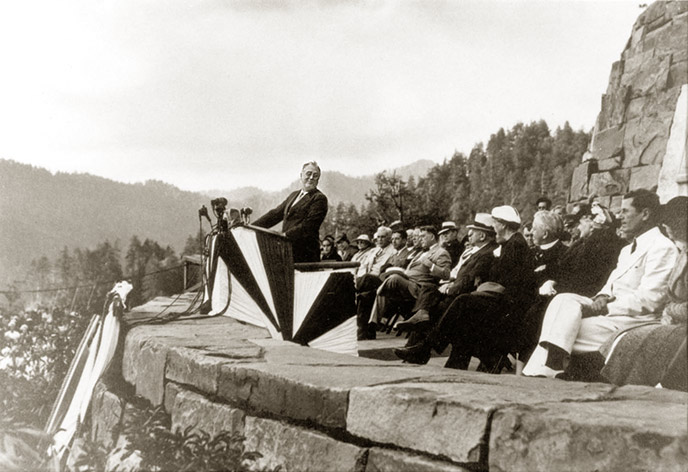When conservationists give thanks to a President Roosevelt, they are probably thinking about the first one—Teddy. But this month, let’s say thanks to the second one, his cousin—Franklin Delano Roosevelt.

The beginning and end of September mark two events when Roosevelt dedicated important elements in the nation’s life of conservation. On September 2 (1940), he stood on the border between North Carolina and Tennessee to dedicate Great Smoky National Park. Great Smoky was only the second national park in the eastern half of the country, joining Acadia in Maine. Beyond that, though, Great Smoky is a remarkable place—a huge area of forest with high plant diversity because it wasn’t glaciated during the last Ice Age. It is a UNESCO World Heritage Site. And Americans seem to recognize its value as well: Great Smoky is the most visited national park in the country (learn more about Great Smoky here).
At the end of the month, on September 30 (1935), Roosevelt was at the other end of the country dedicating Hoover Dam (actually it was Boulder Dam at that time). When it was built, Hoover Dam was one of the true marvels of modern engineering, a massive structure that was the largest dam in the world at the time. It also owes its very existence to the skill and bravery of thousands of workers, many of them Native Americans who braved the sheer walls of Black Canyon to drill and blast the foundation for the dam. Hoover Dam remains an essential part of the water management infrastructure and the electrical supply for the American southwest (learn more about Hoover Dam here).
Before he was president, Roosevelt was governor of New York. He instituted many conservation programs for the state, including protection of forests so the forests could protect water supplies and the creation of a corps of young men to plant trees.
Franklin Roosevelt was elected president four times and served from 1933 to 1945, during which he oversaw the country during crucial times—the Great Depression and World War II. As part of his New Deal programs, he created or expanded major conservation agencies. Shortly after he first took office in 1933, he created the Civilian Conservation Corps, modeled after the similar program he started as New York’s governor. The Corps employed millions of young men over a decade, establishing and maintaining parks and planting more than three billion trees. Enjoy a national park today, and you are probably using roads, campgrounds, hiking trails and picnic areas built by the CCC (learn more about the CCC here).

Roosevelt also had to contend with the Dust Bowl, the combination of drought and poor land-use practices that made parts of the Great Plains virtually uninhabitable during the early 1930s. In 1935, he signed into law the Soil Conservation Service to reverse the trends in soil degradation and loss. Known today as the Natural Resource Conservation Service, the agency helped bring back the productivity of the nation’s heartland (learn more about the Soil Conservation Service here).
He also undertook a major overhaul of the U.S. Fish and Wildlife Service (at that time called the Biological Survey). He brought in one of his biggest critics, Ding Darling, to take over the agency. In a term lasting less than two years, Darling transformed the agency, tossing out useless and corrupt officials, professionalizing the staff and breathing life into the moribund National Wildlife Refuge System (learn more about Ding Darling here).
In all, Roosevelt added more than 100 units to the National Park Service during his 12 years as president. He diversified the kinds of places considered worthy of being part of the country’s heritage, adding cultural and historic sites to natural ones. His vision is why today we have more than 400 sites to call our own. As he said, “There is nothing so American as our national parks.”
